Réunion Island is located in the Indian Ocean (map), east of Madagascar and southwest of the island nation of Mauritius. An overseas department of France, Réunion is well known for Piton de la Fournaise, one of the most active volcanoes in the world, and its breathtaking mountains and calderas. It’s home to an incredible diversity of landscapes and micro-climates, a melting pot of cultures, bustling towns and stunning beaches. The main entry point is the Roland Garros International Airport near St. Denis, the capital city. From here, many adventures await for those who want to explore this diverse island! I’ve explored the length and breadth of this island and based on my trips, I’ve compiled this guide of the best places to visit in Reunion Island. These places can be visited on a comfortable 10-day self-drive itinerary – scroll down for a day-by-day overview of this Reunion Island itinerary.
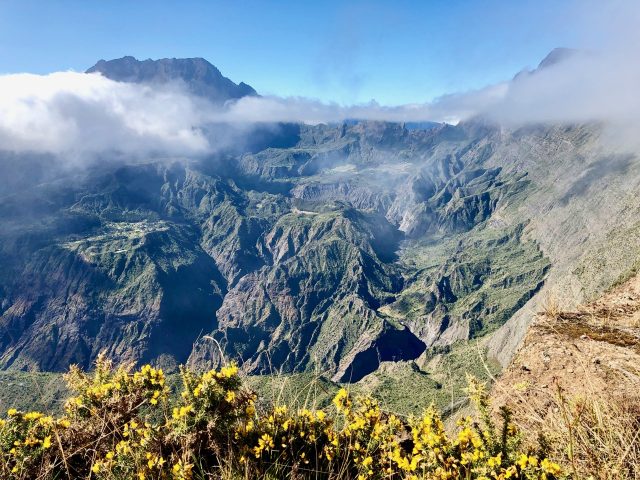
This Réunion Island guide contains links to services I often use myself and can recommend: Skyscanner (flights), Booking.com (hotel bookings), Expedia/Rentalcars.com (car hire), Manawa and GetYourGuide (easy-to-book tours). If you make a booking via one of these services, I will receive a small commission (at no extra cost to you). These commissions help me to maintain my blog and share more travel experiences with you.
Best Places to Visit on Reunion Island
The Roland Garros Airport in Saint Denis is Réunion Island’s main point of entry. The car rental agencies are all located in a separate building opposite the main terminal. Exit the Arrivals Hall and cross the road towards the parking area to access the car rental offices. If you’re short on time, you can opt to join a guided day trip around the island.
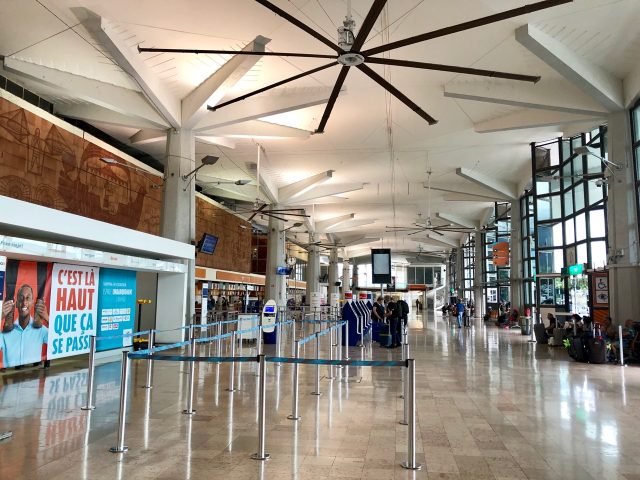
I recommend kicking off your Réunion Island itinerary by heading for the west coast on the N1 highway, bypassing Saint Denis. In less than an hour, you can be relaxing at the beach in Saint-Gilles or L’Ermitage-Les-Bains, the perfect way to recover from jet-lag. Just past Saint Denis, you’ll experience what has to be a masterpiece of modern engineering: a long section of the highway is basically suspended above the ocean! This highway was constructed due to frequent rock falls from the coastal cliffs that plagued the old road.
Read about things to do in Reunion Island.
West coast
The west coast, with its beautiful lagoons, sandy beaches and laid-back towns, is a lovely area to recover from a long journey to Réunion Island. Notable towns to visit in this area are Saint-Paul, Saint-Gilles and Saint-Leu. Spend a few days in this area exploring the coastline. The coastal road (N1A) from Saint-Paul to Saint-Gilles offers beautiful views of the ocean and the cliffs. The west coast is also the best area to go scuba-diving, deep-sea fishing or whale-watching (June – October are the best whale-watching months). There are various tour operators based in towns like Saint-Gilles-Les-Bains. Join a dolphin/whale watching boat excursion with snorkelling, or a marine safari from Saint-Gilles-Les-Bains.
Saint-Paul
Saint-Paul is a bustling town with colonial buildings, colourful markets and an esplanade that runs along the beach.
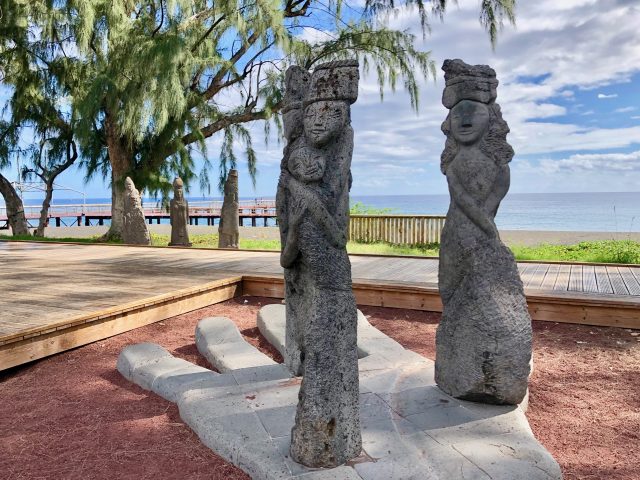
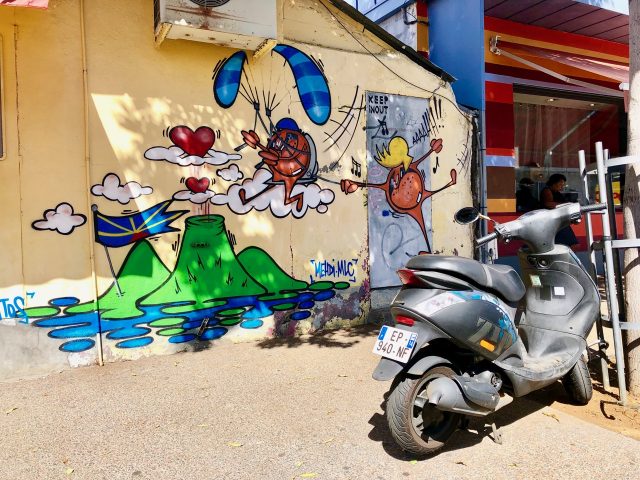
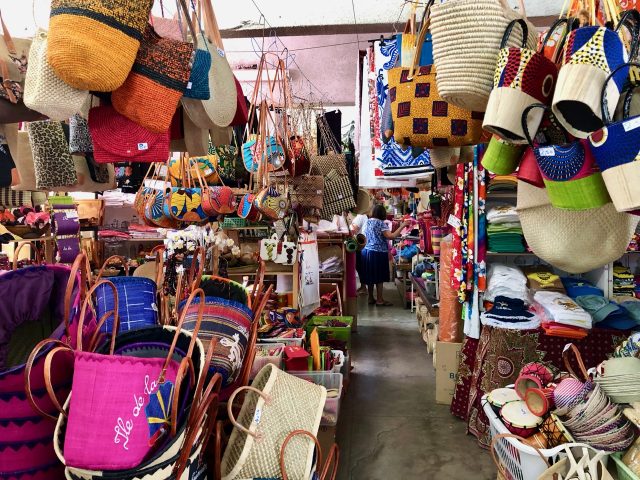
Saint-Gilles
Saint-Gilles is arguably my favourite town in this area. The town centre is compact, with many shops, cafés and restaurants. There’s also a marina and a lovely beach. I recommend parking at the large parking area at the marina and walking across the pedestrian bridge to the town centre. At the marina, you’ll find Chez Marie, a seafood restaurant which I can certainly recommend!
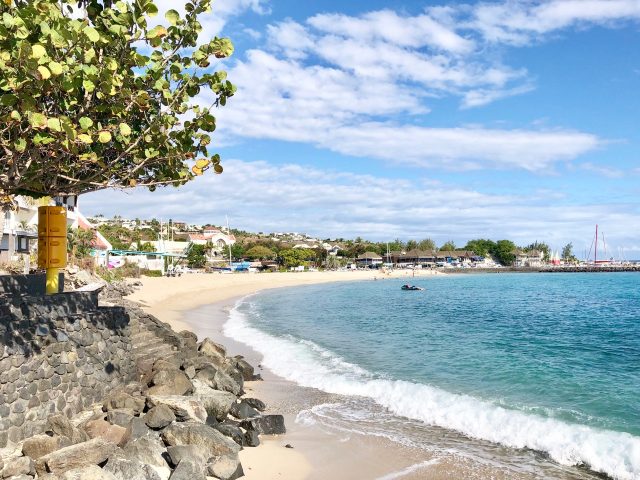
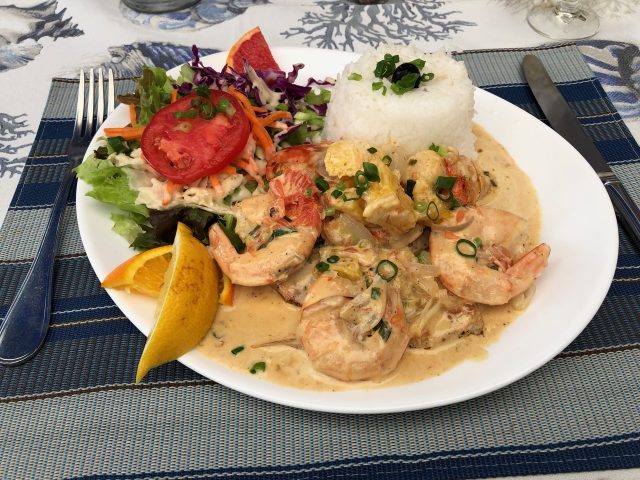
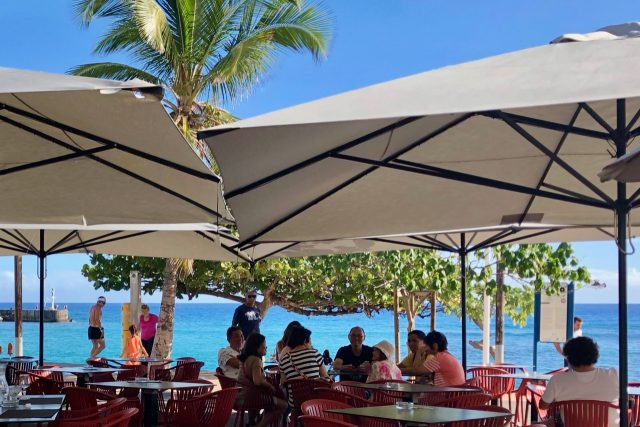
L’Ermitage-Les-Baines
Just south of Saint-Gilles is L’Ermitage-Les-Baines. This beach community has numerous hotels, shops, cafés and restaurants. There’s also the Jardin d’Eden (Garden of Eden botanical gardens) which is quite small but has some unusual plants and trees. One place that’s great for dinner in this area is Le Manta. Set in a beautiful garden, the restaurant serves local seafood and Creole specialties.
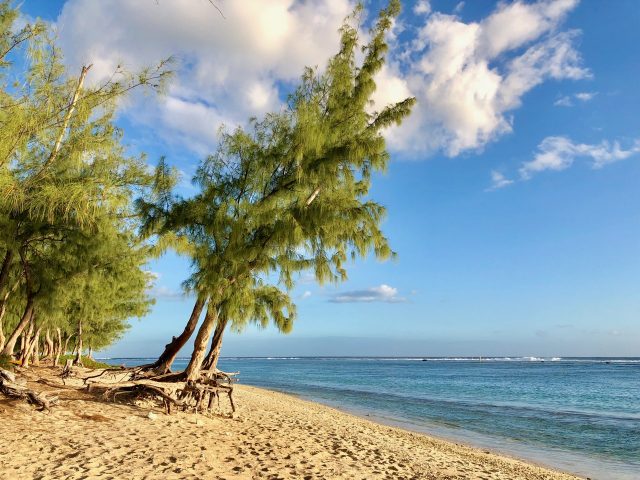
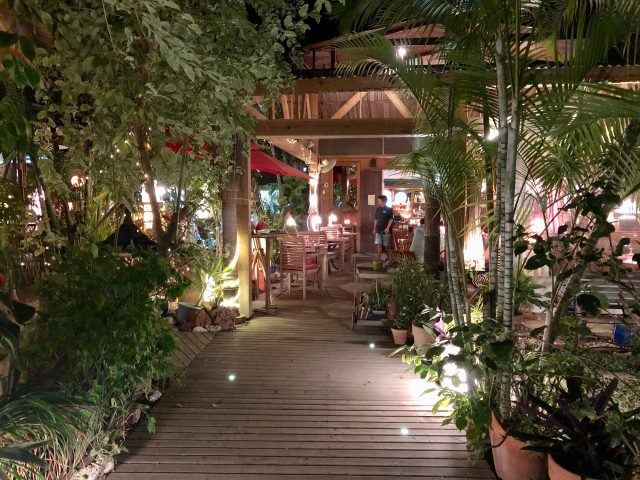
Follow the N1A coastal road down to Saint-Leu. Home to several historic monuments such as the Church of Colimacons and Hôtel des Postes, Saint-Leu is also a popular paragliding area. Go on a paragliding flight over the Saint-Leu lagoon. Another place worth a stop is Kélonia, a turtle conservation centre just outside Saint-Leu.
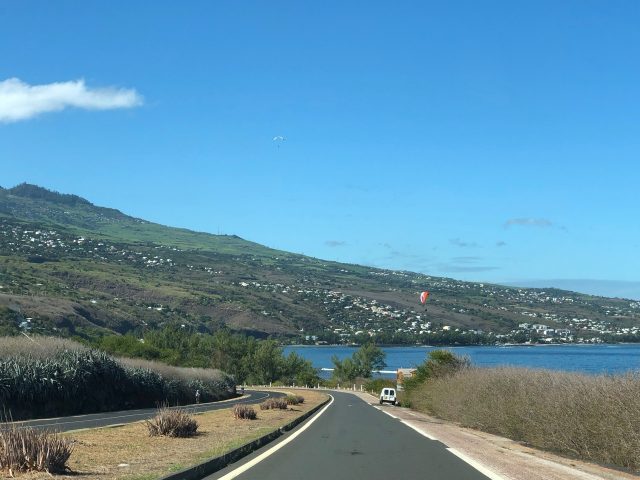
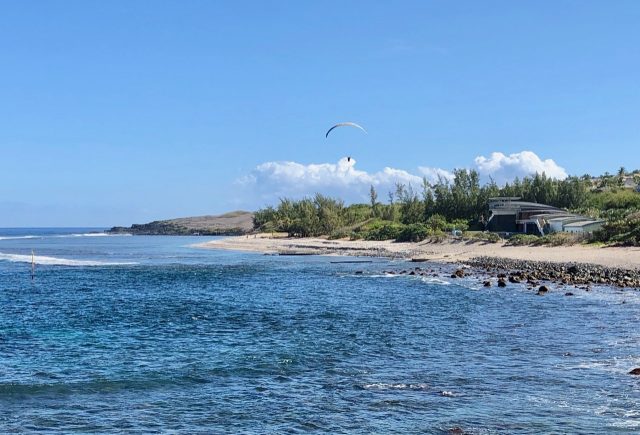
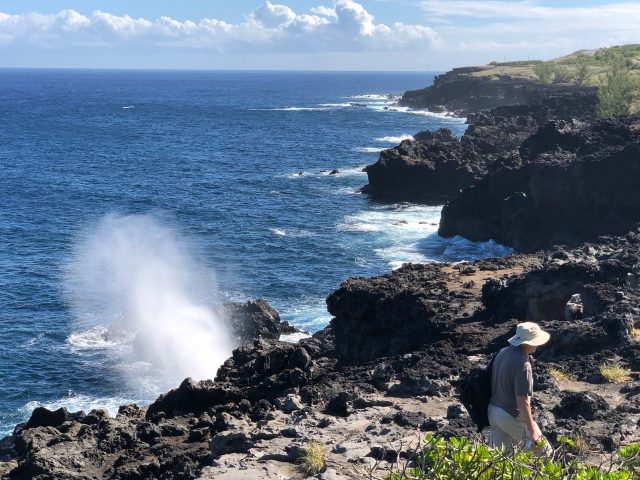
West coast beaches
The west coast boasts some of the best beaches on Réunion Island. The stretch from Saint-Gilles to L’Ermitage-Les-Bains and down to La Saline-Les-Bains has long, sandy beaches, protected by reefs. You’ll also find numerous beach cafés and restaurants. There’s also a beautiful black sand beach at L’Étang-Salé, southeast of Saint-Leu.
Caution: Réunion Island has a history of shark attacks. I enjoyed the beaches on the west coast but restricted my water activities to cooling off in knee-deep water or rock pools.

Inland from the west coast
From the west coast, it’s also easy to head into the mountains for some incredible scenery and a variety of hiking trails. You can opt for a hike into the Cirque de Mafate (a caldera that’s only accessible on foot or by helicopter), visit the Cap Noir viewpoint or you can drive up to Le Maïdo, which offers breathtaking views of Cirque de Mafate and Piton de Neiges (at 3,069 meters, the highest mountain on Réunion Island).
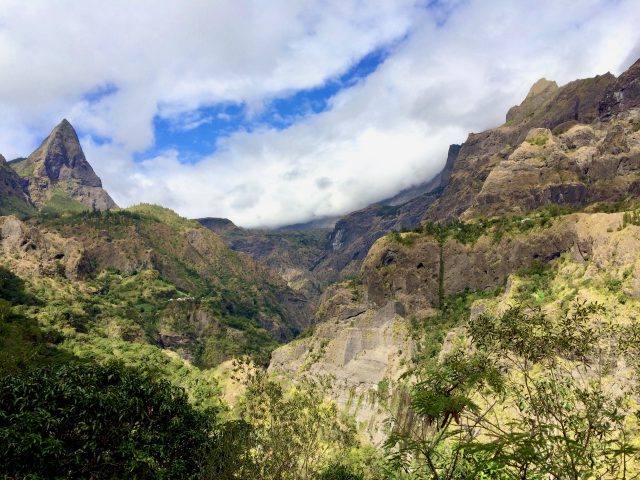
Le Maïdo
If you only have time for a drive to a viewpoint, I recommend Le Maïdo, arguably one of the best places to visit in Reunion Island! Le Maïdo is less than an hour’s drive from the coast. You can also opt for a spectacular paragliding experience from Maïdo!
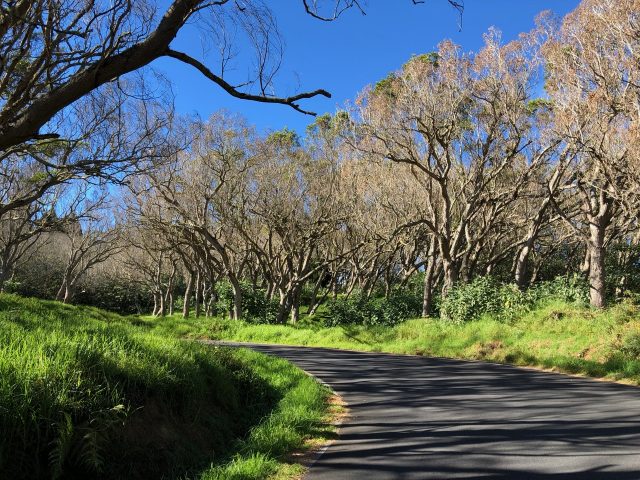
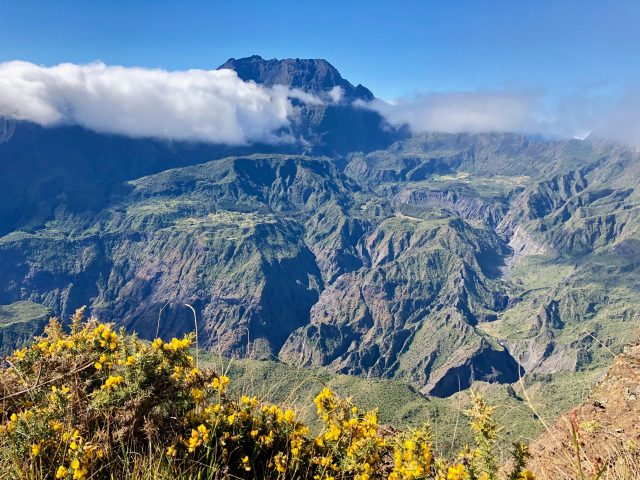
If you’re not afraid of heights and you’re feeling adventurous, take an micro-light flight across Réunion Island. Check here for more information.
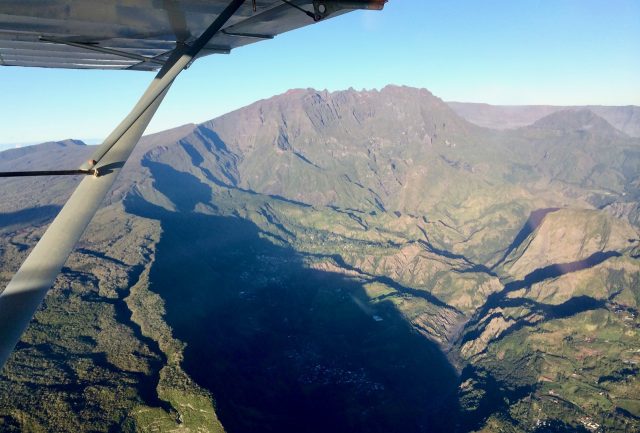
Where to stay on Reunion’s West Coast
There are numerous hotels, B&B’s and holiday rentals on the west coast. I stayed at Relais de l’Hermitage, a comfortable, albeit somewhat dated hotel, with fabulous staff. It has two pools and is literally a stone’s throw from the beach. In this area, you’ll also find Réunion’s most luxurious resort: LUX St. Gilles resort. Other nearby hotels include Hôtel Les Créoles and Hotel le Recif.
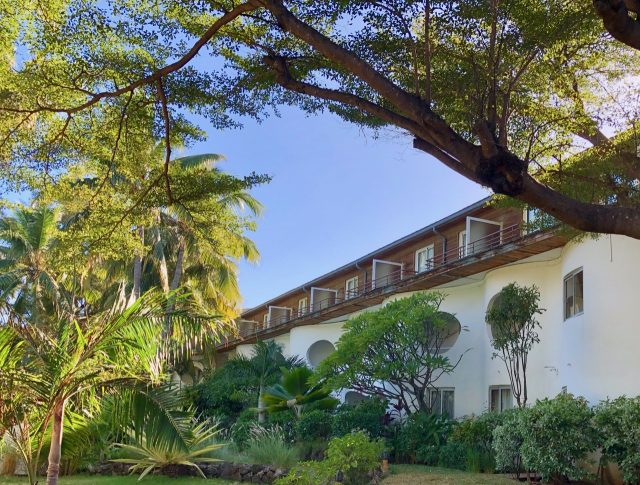
Search for accommodations in Saint-Gilles and L’Ermitage-Les-Bains on Booking.com.
Cirque de Cilaos
Cirque de Cilaos is one of three cirques on the island. These cirques were created when the Piton de Neiges shield volcano collapsed during an eruption a long time ago. What remains today are three huge caldera-like formations or cirques: Cirque de Mafate (there are no roads here), Cirque de Cilaos and Cirque de Salazie (both accessible by road). Of the three, Cirque de Cilaos is arguably the most majestic, with verdant forests, jagged peaks, towering walls (or ramparts) and waterfalls.
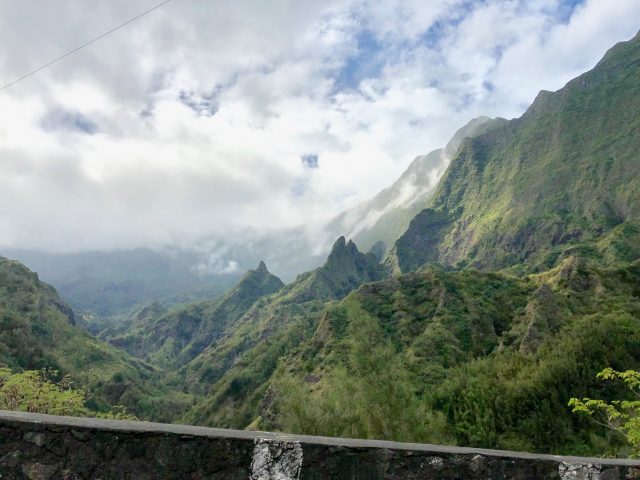
From Saint Louis, take the N5 road towards Entre-Deux (also a lovely place to visit) and Cilaos. The road into the cirque and up to Cilaos is winding (I call it the road of a hundred hairpin bends! Haha!), narrow at times and there are a few one-way tunnels to navigate, so drive carefully. The scenery is simply mind-blowing (it really feels like you’ve entered ‘The Lost World’!) but don’t take your eyes off the road. There’s a lovely café you can stop at for a coffee and it offers stunning views of the peaks.
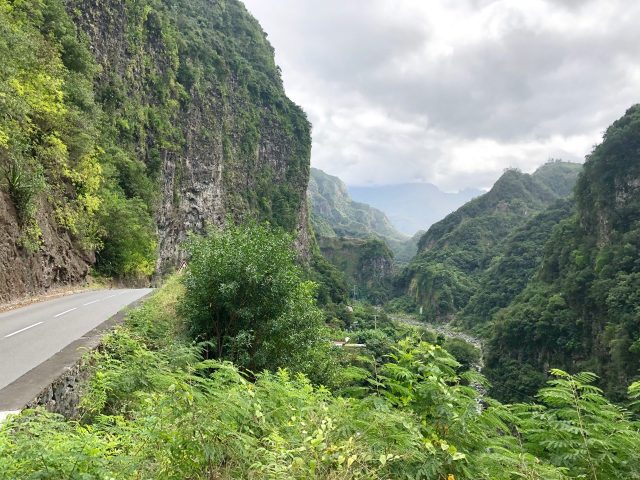
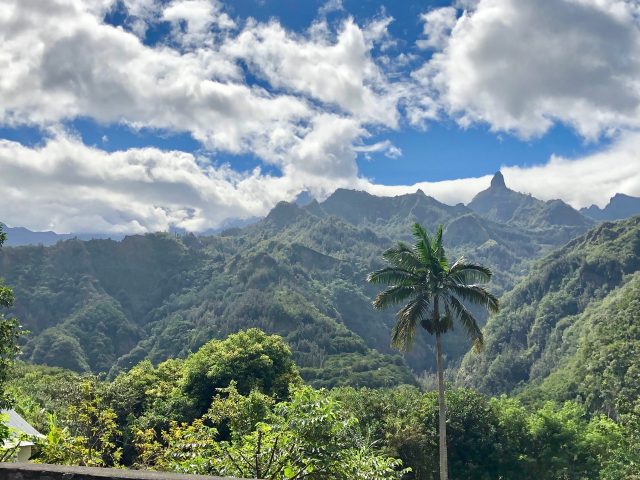
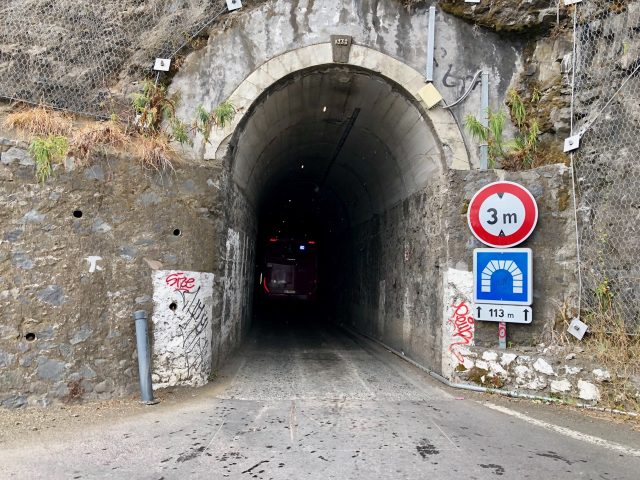
Cilaos
Cilaos is a small town with a variety of accommodation options, from hotels to B&Bs and holiday homes, restaurants and shops. If you’re an avid hiker, I recommend spending a few days here as there are many trails to explore, including one that leads to the top of Piton de Neiges (3,069 meters). Alternatively, you can simply stroll around the town or follow one of the easier trails and enjoy the fresh air and mountain scenery, visit the hot springs and taste some local wines. Check out this half-day hike in Cirque de Cilaos or join this half-day canyoning excursion through the Canyon of Fleur Jaune, the ‘pearl’ of Réunion canyons!
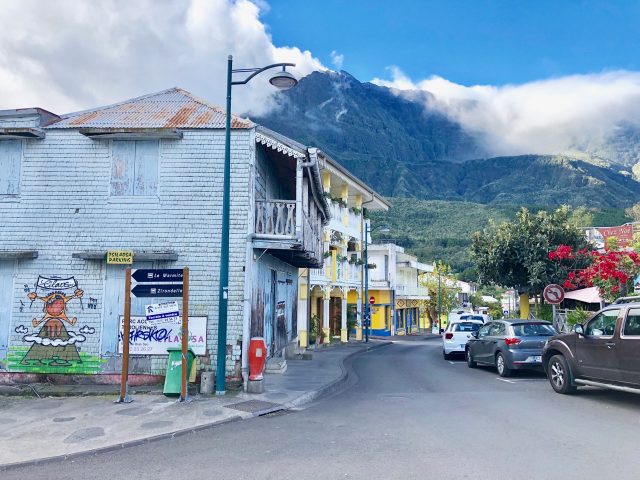
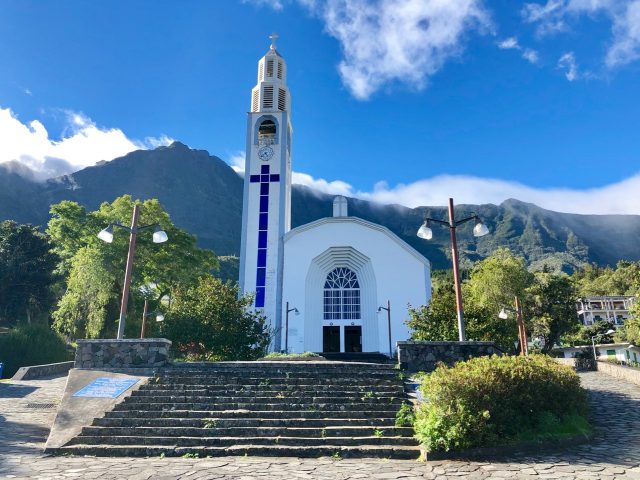
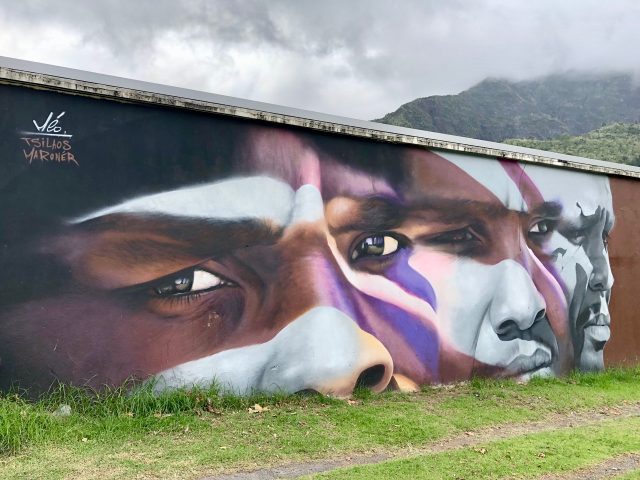
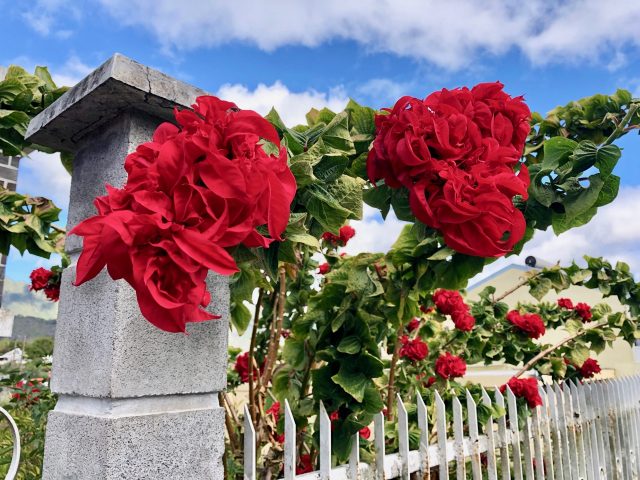
Restaurants in Cilaos I can recommend include Chez Noé, Chez Lucay and Restaurant Ti’ Bonheur de la Mare. Most of the restaurants serve local Creole fare (with Cilaos lentils). Ask for ‘piment’ (salsa) on the side if you like it spicy! In my book, Réunion Island has salsas which easily rival Mexican or other Caribbean varieties.
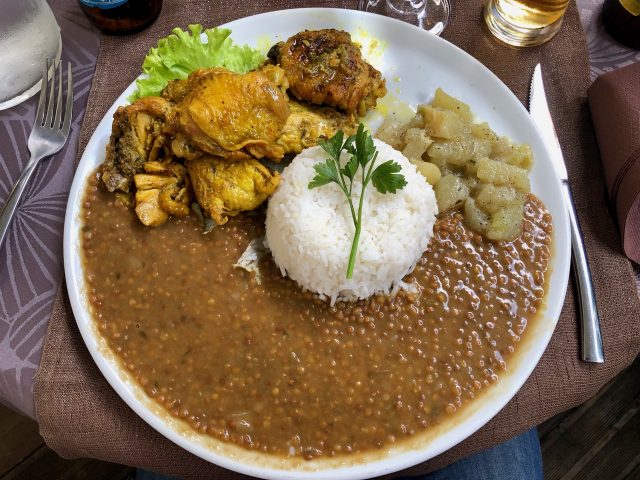
Where to stay in Cilaos
Hotels in Cilaos I can recommend are Hotel des Neiges (with easy parking, airy rooms and it has two pools) and Hotel Le Tsilaosa. There are also numerous apartments, chalets and holiday homes available.
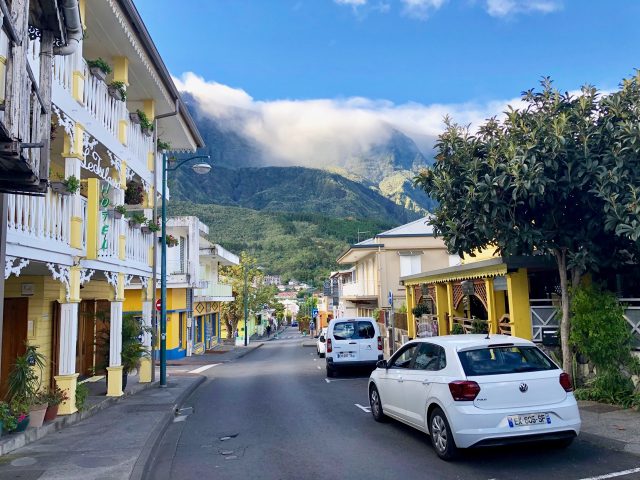
South coast
The south coast region stretches from Saint Pierre to Saint-Philippe. Saint Pierre is the largest town here and is perhaps my favourite town on Réunion Island. There are many hotels, shops, restaurants and cafés in the town centre and along the boulevard that runs parallel to the beach. What I particularly like about Saint Pierre is its melting pot of cultures, the Saturday market and the stunning lagoon at its doorstep.
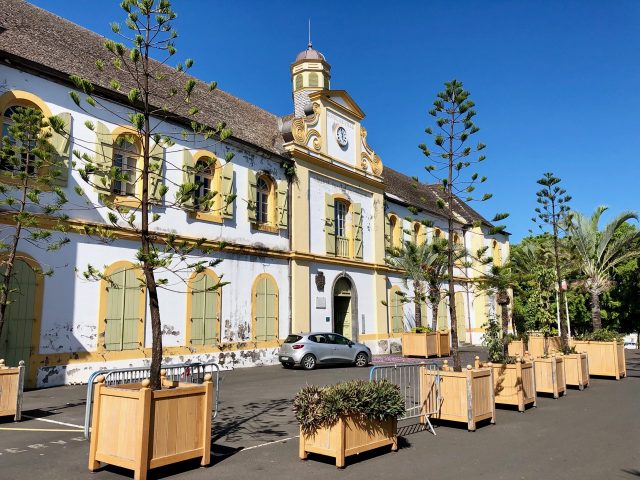
The Saint Pierre Saturday morning market (till 1pm), in particular, is a great place to experience the ‘couleur locale’, try various local food and stock up on spices, salsas, vanilla and souvenirs. I recommend approaching the market via Rue de la Poudriere and parking at either the Jumbo-Score supermarket or the field in front of the Narassigua Péroumal Hindu temple.
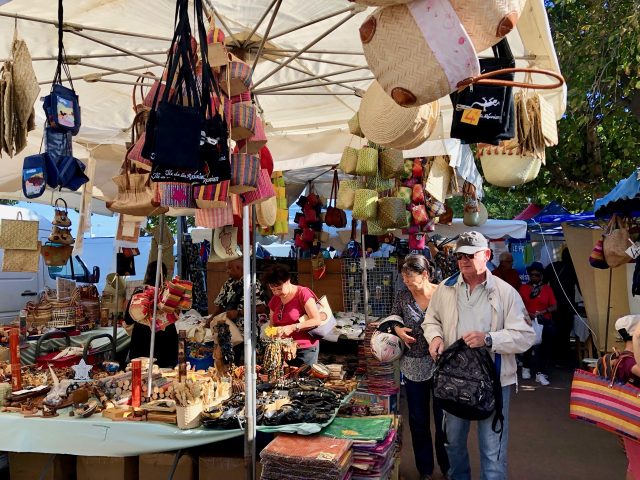
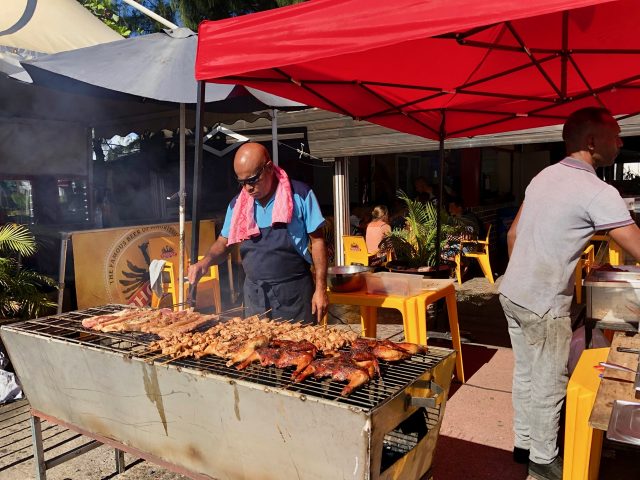
A great thing to do in Saint Pierre is to stroll along the path which runs above the beach. There are various kiosks where you can stop for a drink or a snack while you gaze out across the lagoon.
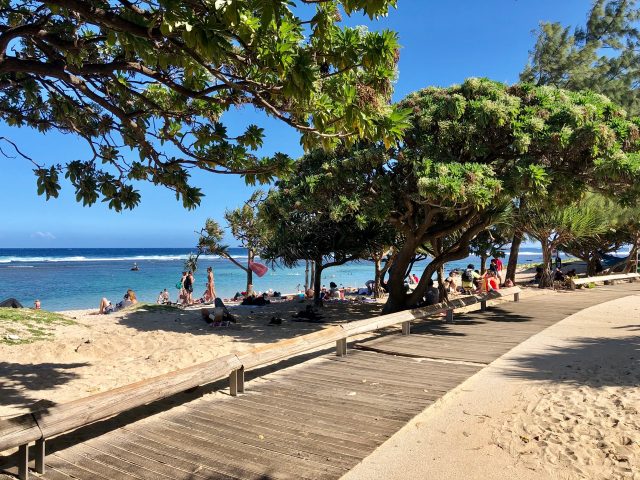

From Saint Pierre, you can also join an unforgettable helicopter tour over the island. I highly recommend this flight tour which departs from the Saint-Pierre Airport.
Where to eat and stay in Saint Pierre
Restaurants in Saint Pierre I can recommend include Le D.C.P. (very fresh seafood) and Ancre Terre et Mer. Hotels I checked out and can recommend are Villa Delisle (in the town centre across the road from the beach), Maison d’hôtes Côté Lagon (about 10-minutes’ walk to the town centre) and Le Battant des Lames (at the beach, about a 15-minute walk to the town centre).

Inland from Saint Pierre
Just north of Saint Pierre, you’ll find the Saga du Rhum, a historic rum distillery that’s worth a visit. There are also many inland attractions close to Saint Pierre. You can go on day trips to the Piton de la Fournaise (one of the world’s most active volcanoes) along the Route du Volcan, drive up to the Belvedere of Fenêtre des Makes (D20 road) or visit the Belvedere of Bois Court (D70 road).
Piton de la Fournaise
If you only had time for just one day trip from Saint Pierre, I recommend driving to Piton de la Fournaise, passing the spectacular Riviere des Remparts and the Martian landscapes of Plaine des Sables. Go in the morning before the clouds roll in. You can also opt to join a guided hike around the Piton de la Fournaise.
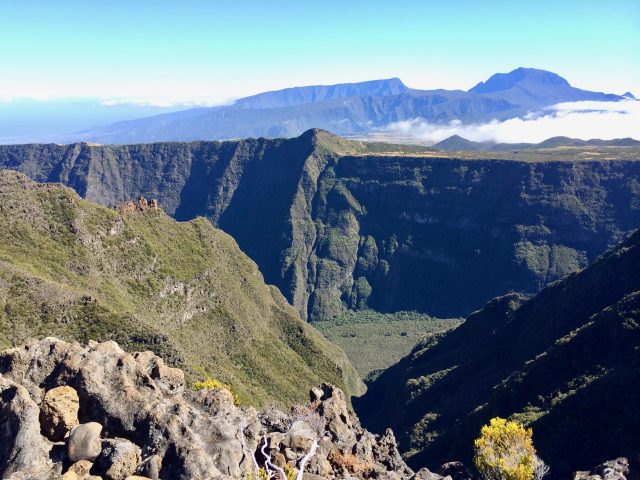

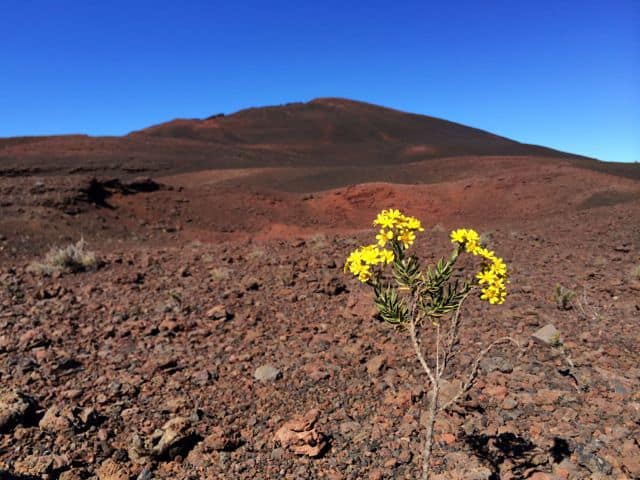
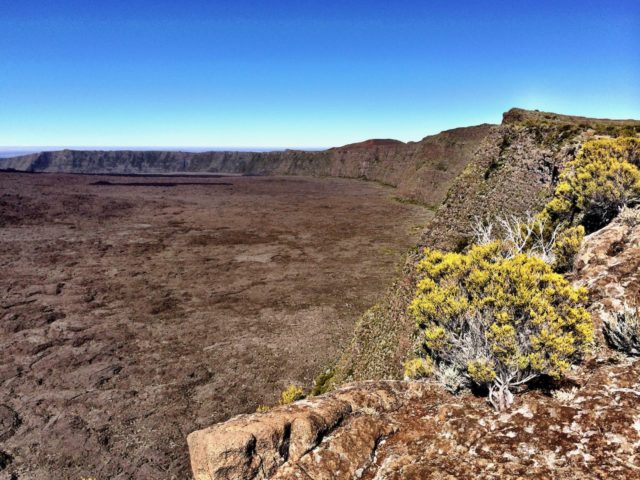
Cascade de Grand Galet
If you love waterfalls, I recommend visiting the Cascade de Grand Galet. From Saint Pierre, drive along the N2 past Saint Joseph to Langevin. Just before Langevin, turn left and follow the road up to the falls. The road starts off relatively easy but beware towards the end: you’ll have to cross a narrow bridge several times, and near the final stretch, the road becomes very steep, with tight hairpin bends. The view of the elegant falls is worth the effort though! It’s possible to hike to the pool at the base of the falls but I don’t recommend it if you don’t have proper hiking shoes.
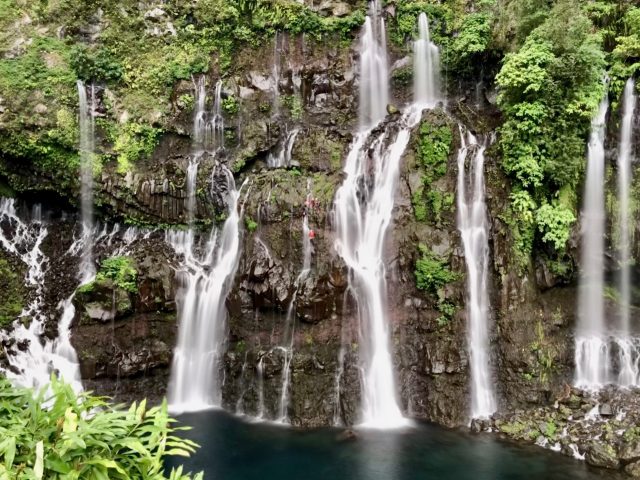
For the adventurous, check out the Petit Galet canyoning experience that includes a zip-line to the falls!
Cap Méchant
Further along the South Coast, visit Cap Méchant. The coast here is jagged and rough, with the black lava cliffs dropping steeply into the ocean. The relentless pounding of the waves have created many interesting rock formations, caves, little canyons and blowholes. Go for a walk along the cliffs to see and hear the booming waves, and enjoy a Creole lunch. There are three restaurants here: Restaurant Le Cap Méchant, L’Etoiles des Mers and Le Pinpin – all three are popular with locals, especially in the weekend.
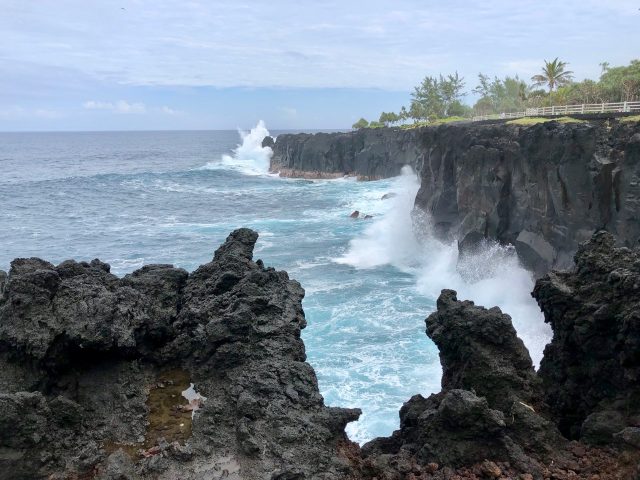
You can also opt to keep driving along the N2 road towards Saint Philippe. Along the way, you’ll be treated to beautiful coastal scenery and you can stop here for a drink or a meal – a variety of restaurants offer ocean views and Creole cuisine. You’ll also find the Jardin des Parfums et des Épices (Perfume and Spices Garden) just off the N2, an interesting stop for plant lovers.
Lava Route
The Lava Route (N2 road) stretches from Saint Philippe on the southeast coast to Saint-Rose on the east coast. This road hugs the east coast and passes old lava flows from past eruptions of Piton de la Fournaise as well as patches of forests.
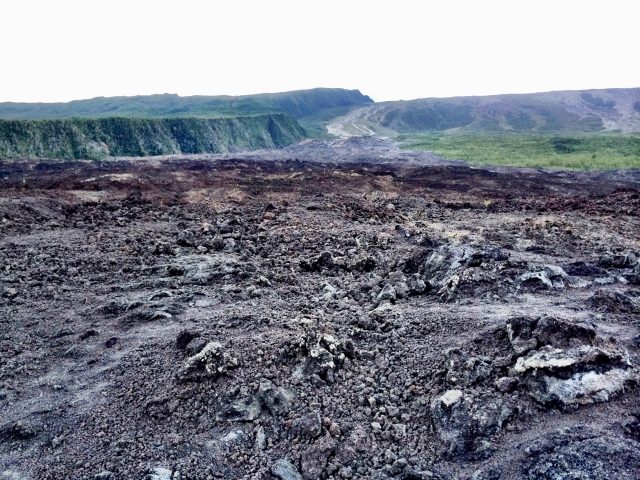
Hike inside a lava tunnel
If you’re really into volcanoes, I can recommend the hike inside an old lava flow of the Piton de la Fournaise. This lava tubing tour near Saint-Rose is a wondrous journey that will take you past intriguing formations and tunnel systems. I don’t recommend it if you’re prone to claustrophobia.
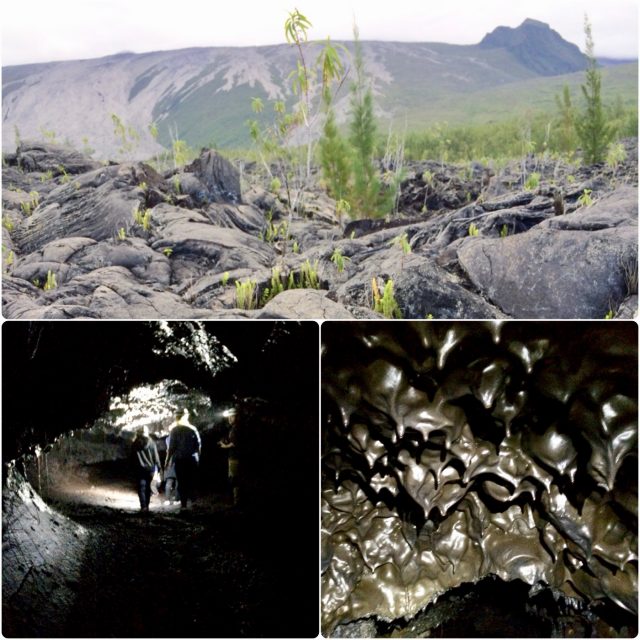
It’s a surreal sight to drive along this road that’s been rebuilt on numerous occasions. Look out for signposts which mark the year of each eruption and resulting lava flow. You can stop at various points along the way for photo opportunities. The Anse waterfall makes for a relaxing pitstop – there’s a café and WC facilities.
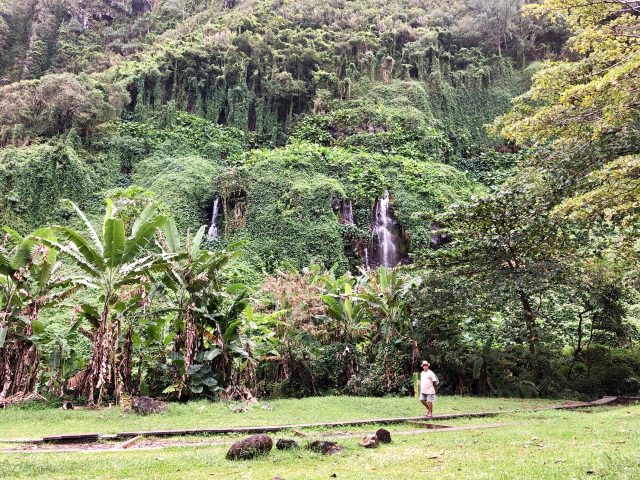
Notre Dame des Laves
The Lava Route ends in Saint-Rose. In the hamlet of Piton Saint-Rose, I recommend stopping at the Notre Dame des Laves. Located along the N2 road, this church is perhaps the most famous on the island as it survived a destructive volcanic eruption in 1977. The church is completely surrounded by hardened lava. Across the road, there’s a little museum dedicated to that particular eruption with a photo exhibition and a video show, which are absolutely worth seeing.
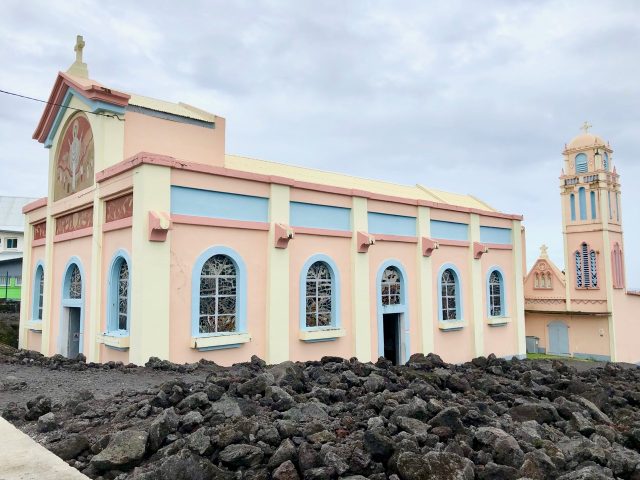
North coast
From Saint-Anne, the N2 road continues in a northwesterly direction towards Saint Denis. At La Rivière de l’Est, you’ll see the historic suspension bridge which crosses the gorge. You can make a quick photo stop here (look for the side road on the northern side of the gorge) but the bridge is closed to the public.
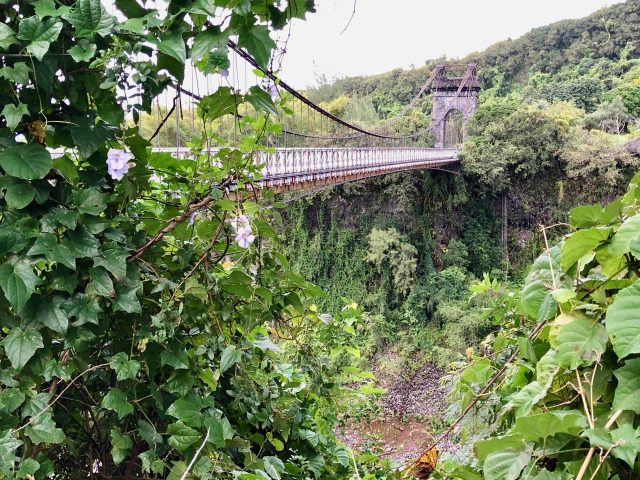
In Saint-Benoît, you’ll find the striking Eglise Sainte-Anne (St. Anne’s Church). Southwest of Saint-Benoît, the long and winding D53 road leads up to the Takamaka viewpoint. This viewpoint offers awe-inspiring views of the Takamaka Valley, the lush forests on the steep mountainsides and beautiful cascades.
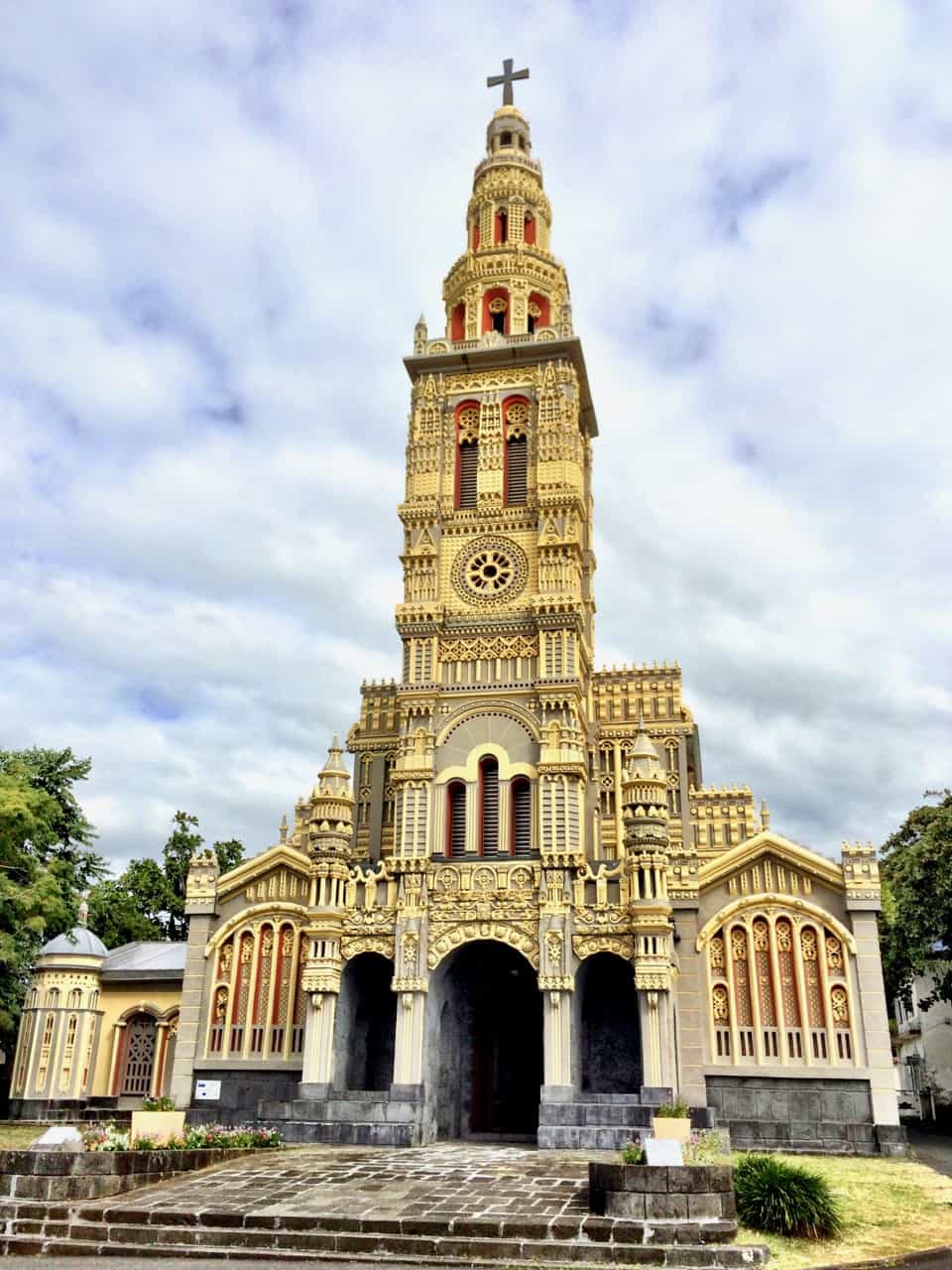
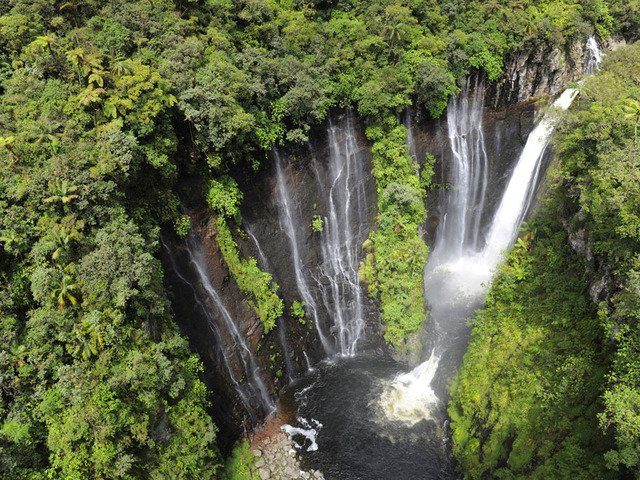
The Riviere des Roches, formed by old lava flows, is a popular canyoning spot. This is one of the best places on Réunion Island for an adventurous activity called aquatic hiking. Along the course, participants, hike, swim, slide and jump from one basin to the next. Bassin la Paix, part of the canyon, is a gorgeous lake with crystal-clear water, a lovely waterfall and surrounded by basalt columns. It is accessible by car.

The north coast between Saint-Benoît and Saint Denis is characterised by mile after mile of sugarcane fields, small settlements, industries and large outlet stores and hypermarkets. Around Sainte-Suzanne, points of interest include the Sainte-Suzanne lighthouse, the island’s oldest, and the Niagara waterfalls. Sainte-Suzanne is a popular canyoning area for families.
Cirque de Salazie
From the N2 road, you can venture into Cirque de Salazie, the most accessible of the three cirques, on the D48 road. This verdant cirque is most famous for its many waterfalls, such as the Cascade Blanche and the Voile de la Mariée, or Bride’s Veil waterfall. Both these falls are accessible from the D48 road but require a hike to get closer. Cascade Blanche is about a 40-minute hike from the car park. Find accommodations in Salazie.
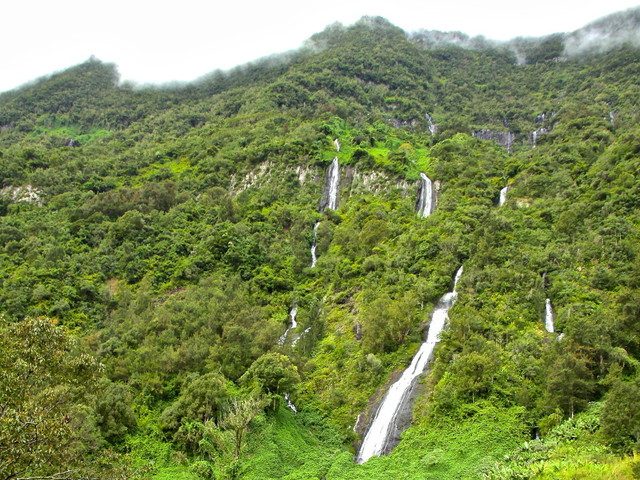

Continue to the Creole village of Hell-Bourg – with its colourful façades and surrounded by lush greenery, it’s been voted as one of the prettiest villages in overseas France. You can opt to spend some time in Hell-Bourg to go hiking – its higher altitude and cooler climate makes it a pleasant area for hikes – or you can spend a day exploring the village with its cheery buildings and flower gardens. A popular hike is the 600+ meter ascent to the Bélouve plateau through primary forest to the viewpoint, which has stunning views of Cirque de Salazie and Piton de Neiges. Along the way, you’ll pass exotic plants and towering tree ferns. The Bélouve plateau can also be reached by car via the Bébour Forest with the F2 road from Plaine des Palmistes. Join a guided hike through the Bélouve forest to Trou de Fer waterfall.
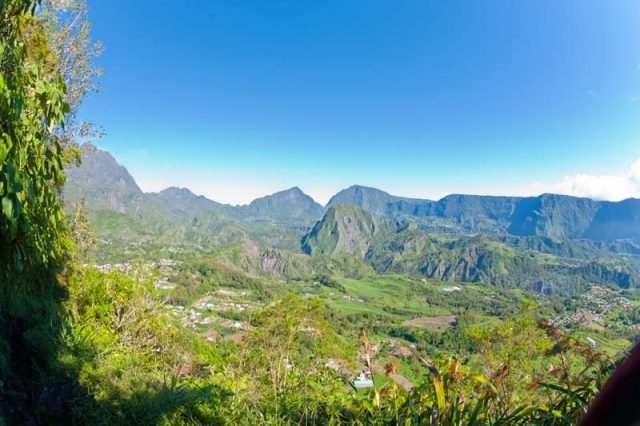
Saint Denis
Saint Denis is the largest town and capital of Réunion Island. You can stroll along the Barachois promenade (look out for whales during the winter months), see colourful Creole houses and admire the historic buildings along the elegant Rue de Paris. Another great thing to do in Saint Denis is visit its markets. I recommend Le Petit Marché with its vegetable, fruit and spice stalls, and Le Grand Marché, which sells handicraft and souvenirs. When strolling around Saint Denis, look out for cool street art by some of the island’s most famous artists. Search for accommodations in Saint Denis.
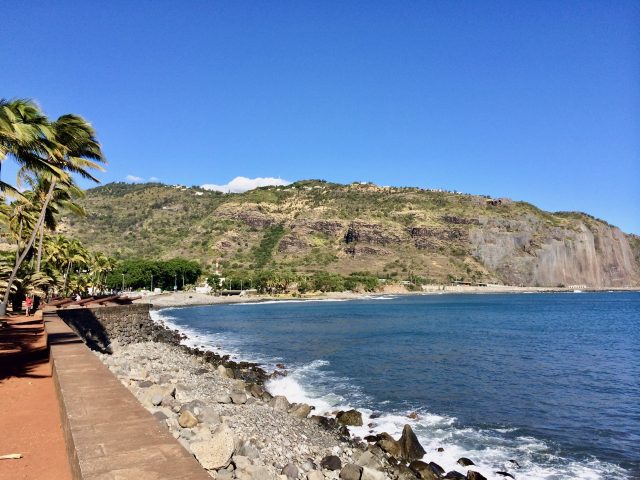

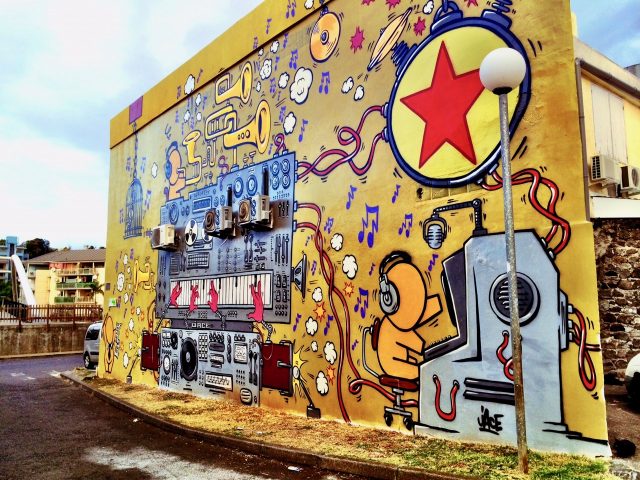
Read about street art in Réunion Island.
Check out the Velvet Escape Travel Planning page.
10-day Best of Reunion Island Self-Drive Itinerary
This 10-day self-drive itinerary takes you past the best places to visit in Reunion Island as described in the guide above.
You can start the trip at Reunion Roland Garros Airport and follow the entire itinerary or concentrate on 2-3 areas, depending on your interests or the length of your stay. I’ve included a suggested length of stay per place/area. The itinerary is as follows:
3 nights: West coast. Suggested base: Saint-Gilles-Les-Bains or L’Ermitage-Les-Baines. Suggested activities: drive to Le Maïdo, go whale-watching, hike into Cirque de Mafate, go on an ultra-light flight, visit the towns like Saint-Gilles or Saint-Leu, or laze on the beach.
2 nights: Cirque de Cilaos. If you’re not here to hike, I suggest spending a night in Cilaos to enjoy the amazing scenery. If you opt for a one-night stay in Cilaos, you can choose to spend the next night in Entre-Deux (a colourful Creole village) or La Plaine des Cafres.
3 nights: South coast. Suggested base: Saint-Pierre or surroundings. Suggested activities: drive the Route du Volcan to Piton de la Fournaise, wander around Saint-Pierre (check out the markets and relax on the beach), and visit the Grand Galet waterfalls. At the end of the two days, continue along the N2 road from Saint-Pierre onto the Lava Road and on to Saint Denis, a long drive but do-able at a leisurely pace.
1 night: North coast (optional). You can also shorten your stay on the south coast in order to spend a night in Hell-Bourg in Cirque de Salazie, or to explore the Takamaka Valley.
1 night: Saint Denis. End your one week itinerary of Reunion Island in the capital. Stroll around the historic town centre and along the Barachois promenade. The next day, drive to the airport (15-minutes) for your car return and departure.
General info
Réunion Island is 2,511 square kilometers in size and has a population of under 1 million. A French overseas department, French is the main language and the Euro is the currency used. If you have a European Union mobile phone subscription (with EU-wide coverage), your voice and data plan is valid on the island as well with no extra charges.
How to get to Réunion Island
There are daily flights from Paris CDG and Orly airports to Réunion Island with Air Austral (the airline of Réunion Island, and a very good one I must add), Air France and French Bee (French LCC). There are also frequent daily flights from nearby Mauritius (45-minutes away). Air Austral also connects Réunion Island with cities in South Africa, India and Thailand. Search for flights with Skyscanner.
Roads and car hire
The roads are, in general, in very good condition, making it relatively easy to drive around the island yourself. However, the mountain roads, with their countless hairpin bends, can be a challenge to navigate, so if you’re not accustomed to manual (stick-shift) transmissions, I highly recommend hiring a vehicle with an automatic transmission. As in continental Europe, you drive on the right side of the road.
Accommodations
Accommodation options consist of small hotels, B&B’s, guest houses and holiday rentals. Luxury accommodations are relatively sparse – the accommodations are mainly in the 1-3-star categories.
Weather and clothing
Réunion Island has a tropical climate. Winter is in July-August (opposite to the northern hemisphere) and is slightly cooler (18-24 degrees Celsius) and wet. Summers are hot (28-32 degrees Celsius) and humid. The west coast tends to be drier than the east coast. Note that it is colder up in the mountains (such as in Le Maïdo and Cilaos) so it’s advisable to bring a light jacket or sweater/hoodie. If you intend to go hiking, please ensure you have proper hiking clothes, shoes and other equipment, as well as sufficient water and food. The paths can be quite treacherous, especially after a rain shower.
Shark warning
There have been numerous (fatal) shark attacks on Réunion Island in the past years. It’s relatively safe (i.e. low risk) to swim or practise water sports within the confines of a lagoon such as at L’Ermitage-Les-Bains or Saint-Pierre, however, it’s not advisable (in some cases, it’s prohibited) to swim or surf in open-ocean areas. If you’re not sure, please check with the local authorities or tourism office. My personal advice is to relax at the beach, cool off in shallow areas (of a lagoon or a rock pool) and be active inland – the mountainous interior just begs to be explored!
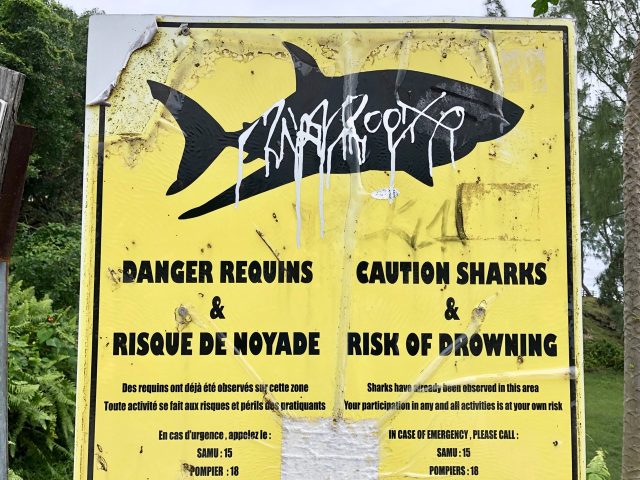
There you have it! My guide to the best places to visit in Reunion Island! I hope this guide is helpful for anyone planning a trip there. Travel safe and enjoy this magnificent island!

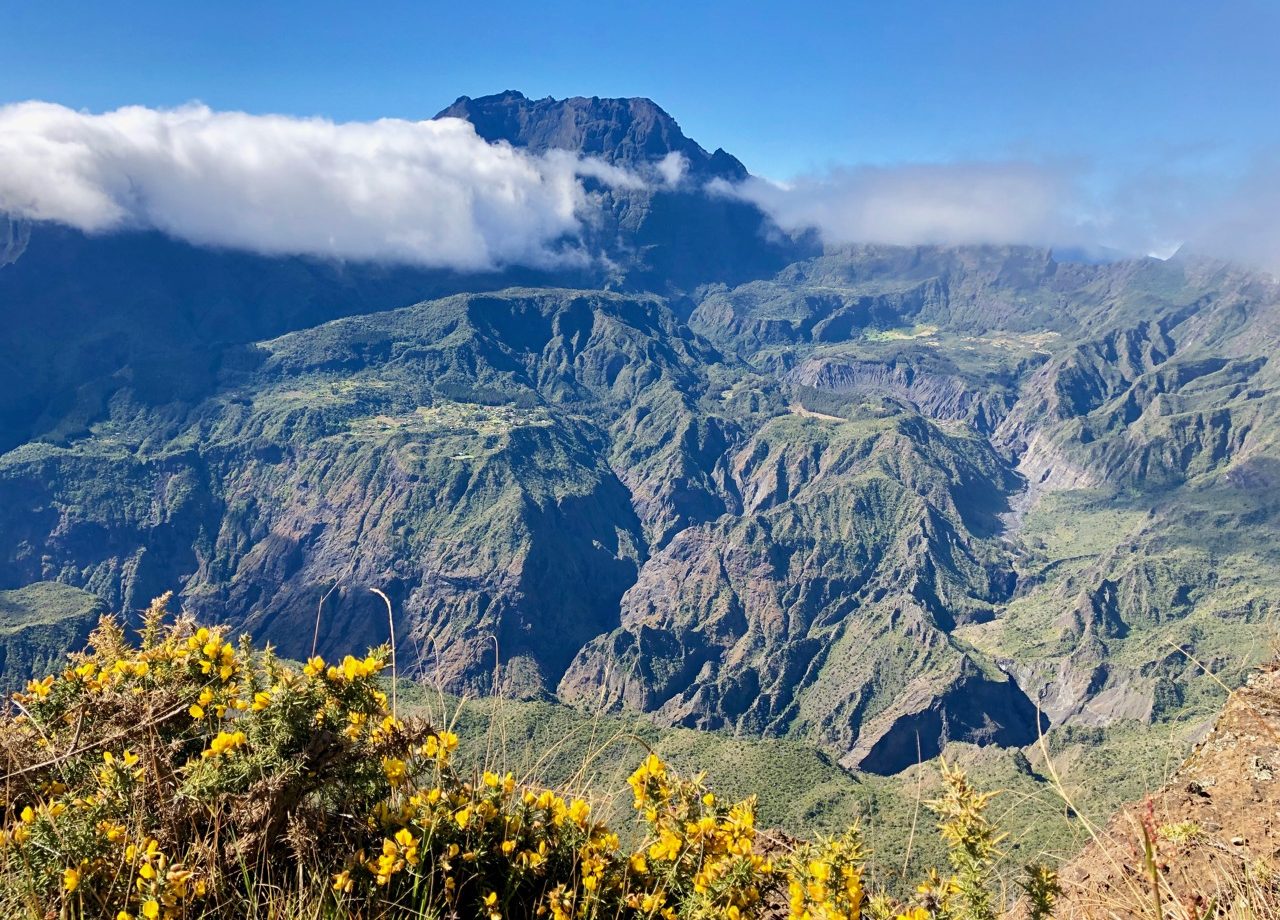
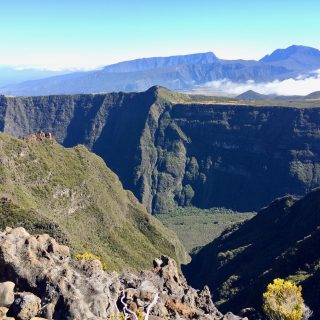
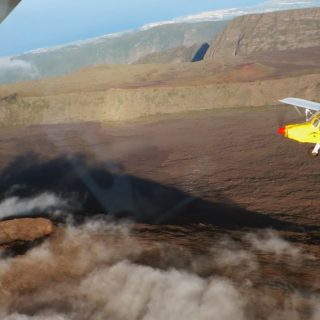
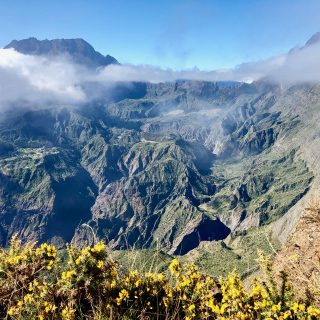
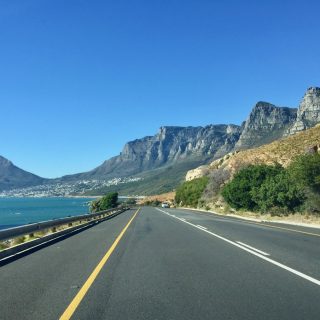






Hi Louise,
Thanks for your comment. There are some bike hire companies in St. Gilles (and probably in St. Pierre too). I suggest Googling these companies and booking the bikes in advance. I’m sure they’ll have some suggestions for routes you can follow.
Cheers,
Keith
Hi Keith
Thank you for your well written guide to Reunion, thoroughly enjoyed reading about your experiences and adventures. Very worthwhile information.
We are also looking at doing a self drive exploration and would like to include hiring of mountain bikes to go on trails and sightseeing. Besides the guided tours, have you any insight into hiring options in St Pierre and St Gilles, and routes to follow.
We are hoping to go in December, so do these need to be booked so far in advance?
Thanks, Louise
South Africa
Hi Lucienne, I pre-booked all my accommodations. My last trip there was in the month of June and it wasn’t too busy so I think pre-booking is not really necessary. However, I recommend pre-booking a few to start (definitely the south coast area, along the coast) and in smaller places like Cilaos. Hope this helps.
Cheers,
Keith
Did you book accommodation as you go or does it need to be prebooked, end June
Hi Bepsi,
The microlight is definitely more thrilling, and I think better for photography as you can open the window (or even door!). I enjoyed both the microlight and helicopter experiences but the microlight was more special I would say.
Keith
If we have to do either the microflight or the helicoper ride in the Reunion which one is the preferred or better option.
Bepsi
The weather should be fine; about 26 degrees Celsius and the occasional rain showers. Have a great trip!
Hi, it will be first visit for me next month to Reunion Island I wander how the weather will be?
it was really nice reading about Africa’s best of Reunion Island – guide and itinerary
Hi Angela,
I’m glad that my post ignited your interest and I hope you get to visit one day. Reunion Island is truly amazing and a road trip is the best way to explore the island. The mountainous interior is just incredible, and yes, I would avoid swimming in the ocean, even if it’s just off the beach.
Cheers,
Keith
I have never really read much about the Reunion Islands and so this post was a real eye-opener. I love the sound of doing a road trip around the island and really immersing myself in the culture. The landscape looks incredible although I don’t think I would be swimming in the ocean with shark attacks on the increase!
[…] Check out my guide to the best places to visit in Reunion Island. […]
[…] Read my guide to the best places to visit in Réunion Island. […]
[…] Read my guide for the best places to visit in Reunion Island. […]
[…] Read about things to do in Reunion Island or my ultimate Reunion island itinerary. […]
[…] you’re flying to neighbouring Réunion Island, I recommend sitting on the right side of the plane for views of the southwestern coast, including […]
[…] Guide to the best places to visit in Réunion Island […]
[…] Read about the best places to visit in Reunion Island on a suggested 10-day self-drive itinerary. […]
[…] out my guide to Reunion Island with the best places to visit and a suggested 10-day […]
[…] about the Best Places to Visit in Reunion Island on a 10-day self-drive […]
[…] car (like a Toyota Yaris) is sufficient to navigate most of the mountain roads. Read about the Best Places to Visit in Reunion Island on a self-drive […]
[…] Read about the Best Places to Visit on Reunion Island. […]